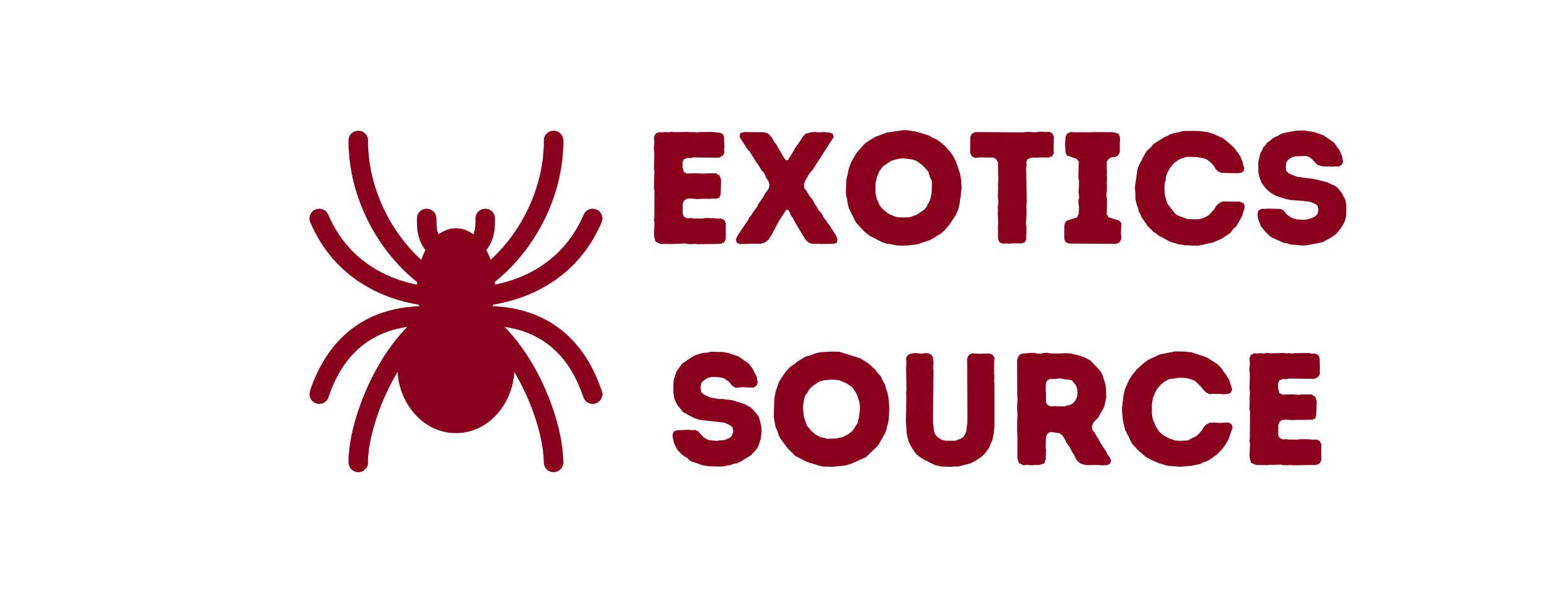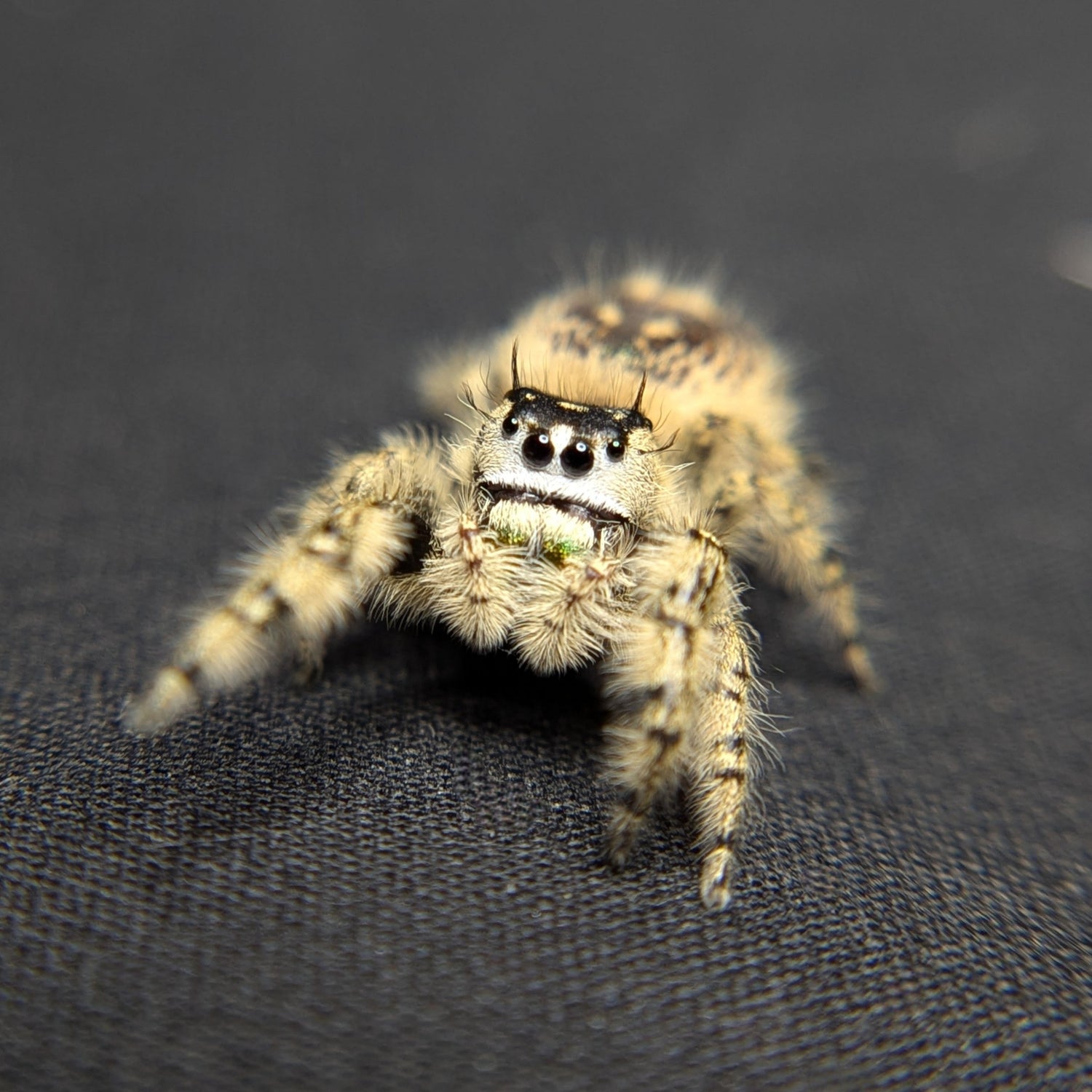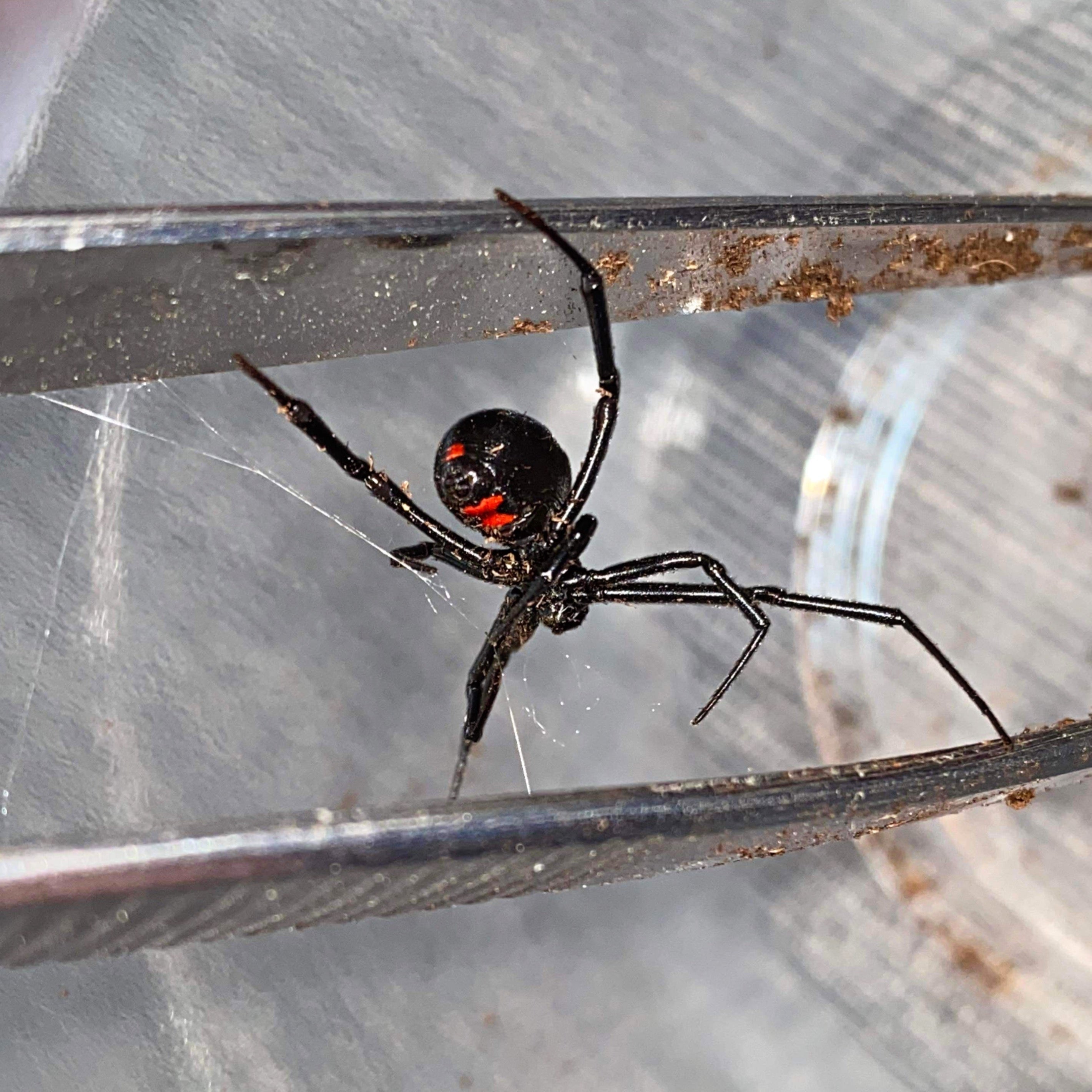Introduction
Phidippus otiosus, commonly known as the Otiosus Jumping Spider, is a captivating species native to the southeastern United States. Known for their iridescent chelicerae, large eyes, and curious personalities, these spiders are popular among arachnid keepers for their bold behavior and ease of care.
Enclosure Setup
A small, well-ventilated enclosure such as a 4x4x6 inch acrylic display or plastic container is suitable for an adult P. otiosus. Vertical space is more important than floor space, as these spiders prefer to build hammock-style webs high up in their environment. Include natural elements like cork bark, twigs, and fake or live plants for climbing and enrichment. The enclosure should be escape-proof with plenty of airflow to prevent mold.
Room temperature between 70-80°F is ideal, and no additional heating is typically required unless your ambient room temperature drops significantly. Humidity should be moderate, around 50-60%. Light misting every few days is enough—avoid over-misting as too much moisture can lead to mold or health issues.
Diet
Otiosus jumping spiders are active hunters that thrive on a varied diet of small, live insects. Suitable prey includes fruit flies (Drosophila hydei for juveniles), pinhead crickets, small mealworms, and tiny roaches. Feed juveniles every 1-2 days and adults every 2-3 days. Prey items should be no larger than the spider’s abdomen. Always remove uneaten food within 24 hours to avoid stress or harm.
Shedding and Growth
Like all jumping spiders, P. otiosus molts several times throughout its life. During pre-molt, they may refuse food and stay hidden in their web retreat. Avoid disturbing them during this time. Post-molt, wait a few days before offering food again to allow their new exoskeleton to harden.
Female-Specific Care
Adult females may lay eggs, even if unbred. They will often remain in their retreat to guard the egg sac. During this period, feeding may decrease. Keep conditions stable and avoid disturbing her until she resumes normal behavior.
Handling and Temperament
Phidippus otiosus is generally bold, curious, and easy to observe. While handling is possible, it should be done carefully and over soft surfaces to prevent injury if the spider jumps. Allow them to walk onto your hand voluntarily rather than forcing interaction. Keep handling sessions short to minimize stress.
Maintenance and Cleanliness
Spot clean the enclosure regularly, removing old prey and webbing buildup. A full enclosure clean and web removal can be done every 3-4 weeks or as needed. Avoid using harsh chemicals or cleaners—warm water and gentle scrubbing are usually enough.
Conclusion
With their stunning appearance, quirky personalities, and manageable care requirements, Phidippus otiosus makes an excellent choice for both beginner and experienced jumping spider keepers. Provide a secure, enriched enclosure and regular feedings, and you’ll enjoy watching this vibrant little hunter thrive!




Leave a comment
This site is protected by hCaptcha and the hCaptcha Privacy Policy and Terms of Service apply.